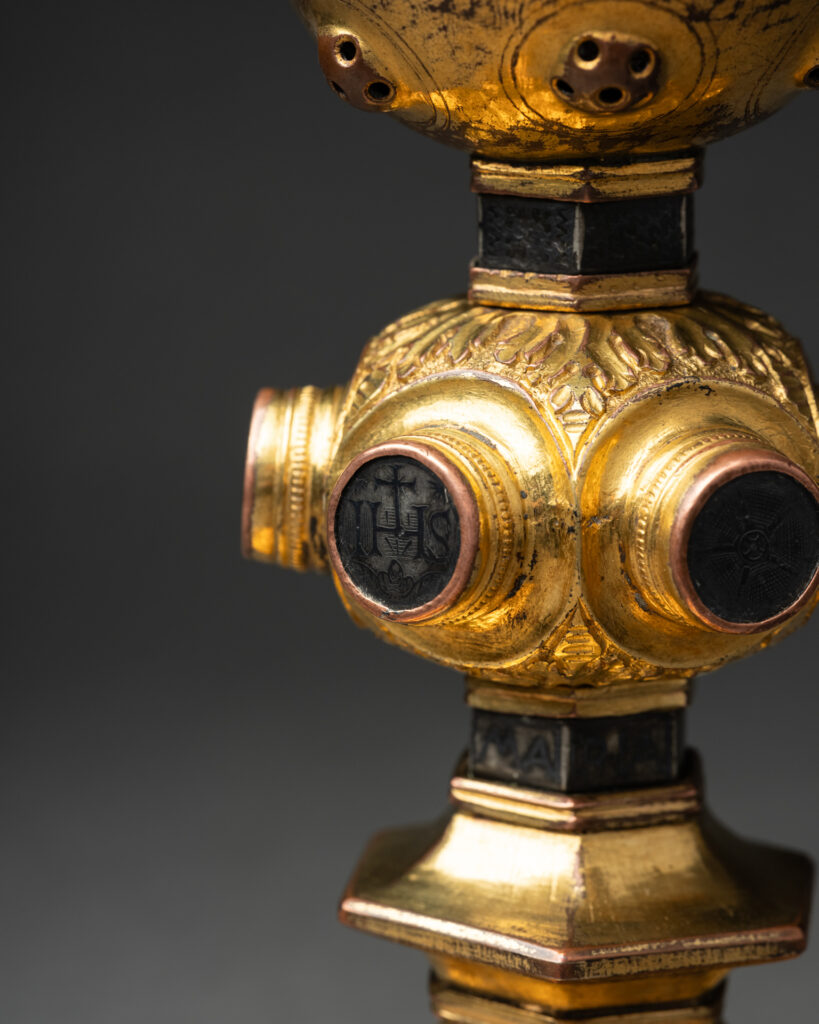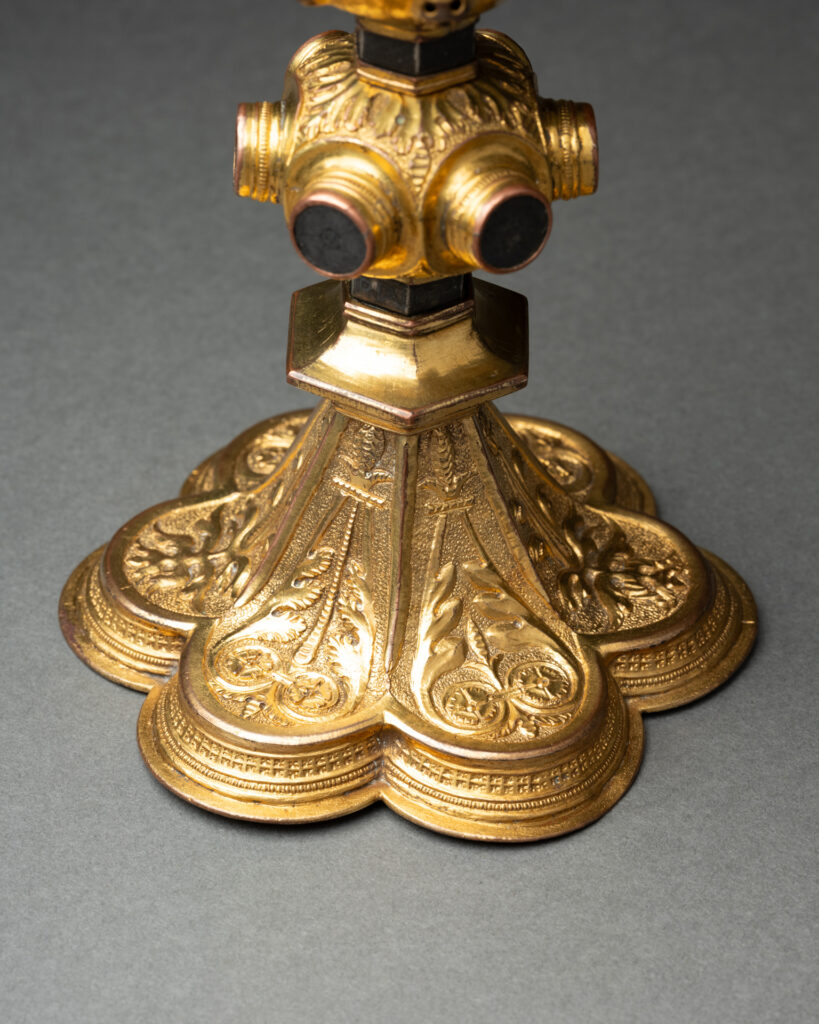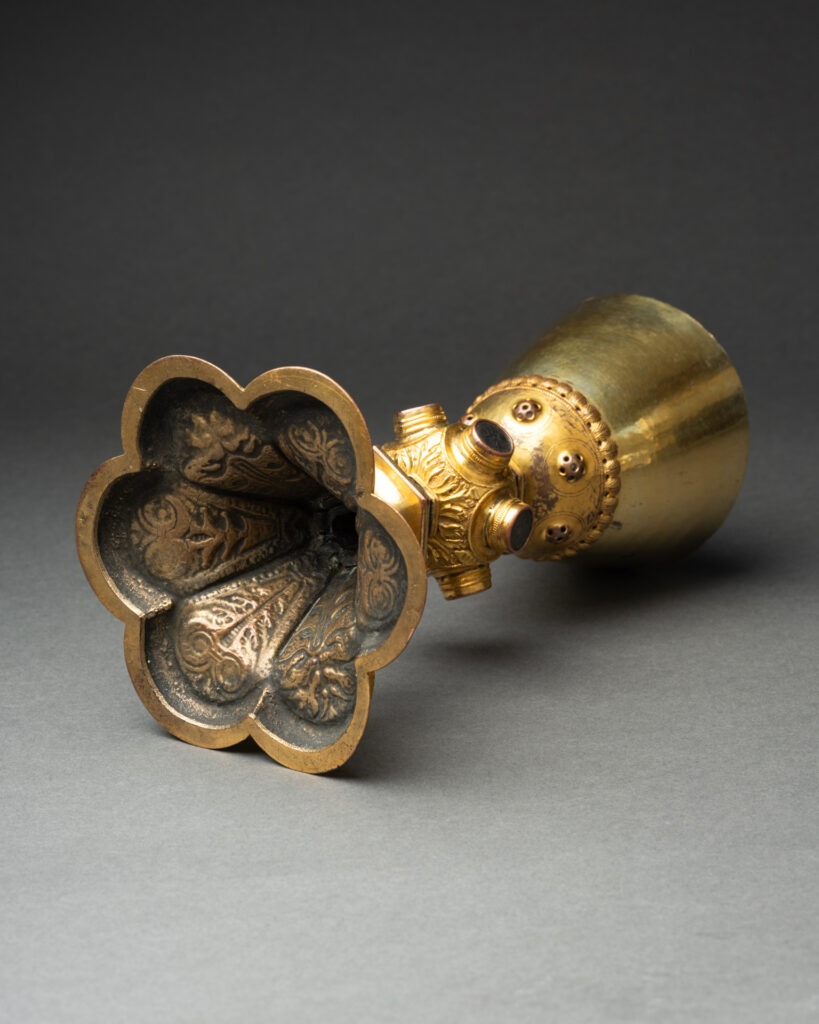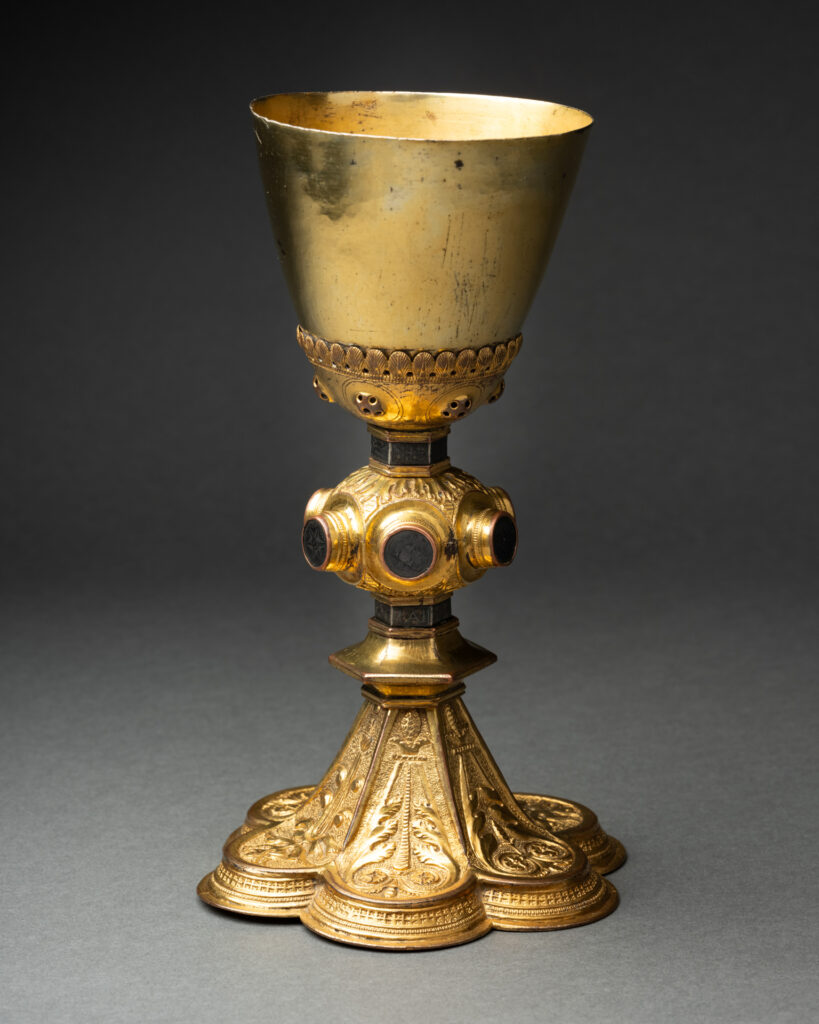This gilded copper chalice, adorned with silver niello inlays, is a remarkable example of religious goldsmithery inspired by the Gothic tradition. Dating from the 15th century, it is of Italian origin, particularly from Siena. A liturgical object of great symbolic and aesthetic richness, it was intended to contain the consecrated wine at the Eucharist, in memory of the cup shared by Christ at the Last Supper. In form and decoration, it is a continuation of a medieval typological model, while at the same time testifying to refined craftsmanship.
This refinement reflects the golden age of the Sienese hearth, particularly brilliant in its Gothic phase in the 14th and 15th centuries. The Church, as a major sponsor, encouraged exclusively religious artistic production. These works express a Christian discourse in which sensibility, centered on the visual, allows the faithful direct access to spiritual contemplation through material beauty.
The chalice consists of three distinct parts: the foot, the stem and the cup. The foot, with its six-sided poly-lobed plan, features a particularly elaborate chased and embossed plant decoration, composed of leaves, scrolls and stylized flowers. This ornamental repertoire is directly inspired by Gothic illuminations and architectural decorations, which visually convey the harmony of divine creation and the beauty of the liturgy.
The hexagonal stem is punctuated at its center by a wide knot, typical of Gothic chalices. The latter is adorned with six medallions inlaid with niello silver, a precious technique. The use of this technique dates back to Antiquity, but was revived in the Middle Ages and Renaissance to decorate goldsmiths’ wares and prestigious weapons. It’s a black alloy composed of sulfur, lead, copper and silver, which enables the engraved cavities to be drawn or written in a contrasting, deeply legible manner.
These medallions depict coats of arms, probably those of the commissioner or a religious order, and also an inscription IHS, the sacred monogram of the name of Jesus (“Iesus Hominum Salvator”). Below the latter is another inscription, Ave Maria Sacra, a devotional formula dedicated to the Virgin Mary.
The slightly flared bowl is supported by an openwork frame featuring stylized leaf motifs, extending the decorative richness of the whole. Although made of copper, a more affordable material than solid gold or silver, it retains a solemn, sacred lustre. The gilding masks the more modest nature of the metal, while respecting liturgical requirements for sacred objects to be noble and resplendent. This chalice, with its fine details, rich materials and complex symbols, illustrates the spiritual and social power of liturgical objects in the medieval Church. It is both an instrument of the sacred and a work of art, transmitting down the centuries a tangible image of the faith and artistic taste of its time.



